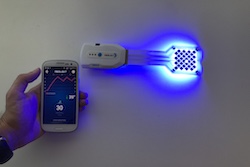Link between neural circuits and mating behaviour
The aim of the FRU CIRCUIT (Neural basis of Drosophila mating behaviours) project was to define the anatomy and function of neural circuits in the brain of the common fruit fly (Drosophila melanogaster) that generate the distinctive mating behaviour of both males and females. This will provide a detailed understanding of how these circuits generate complex sexually dimorphic behaviour and help to explain the operating principles of neural circuits in different species. Researchers conducted an analytical analysis of the fruitless (fru) gene in order to draw up a cellular resolution atlas of the fru circuit. Normal fru function enables proper development of motor neurons which innervate muscles needed for fly sexual courtship behaviour. The genetic analysis of the fru gene revealed that these neurons mostly comprise of those neurons with sexually dimorphic functions within mating. It also indicated that most of the fru neurons contribute in some way or other to a specific aspect of male or female mating. Scientists succeeded in identifying key components of the circuitry that generates the male courtship song and alters his courtship behaviour in response to experience. They have also identified neurons in the female central nervous system that change her mating behaviour after initial copulation. Results showed how the neuronal circuit detect and process the relevant cellular inputs, generating the appropriate motor outputs. Many neurons in this circuit are sexually dimorphic, thereby providing clues as to how the distinct behaviour of the two sexes may be generated. FRU CIRCUIT developed genetic tools, instrumentation and software that can be used to investigate other behaviours in D. melanogaster. They included a system for rapidly modulating neuronal activity in a freely behaving fly and a system for automated fly tracking and courtship analysis for studying a wide range of fly social behaviours.







